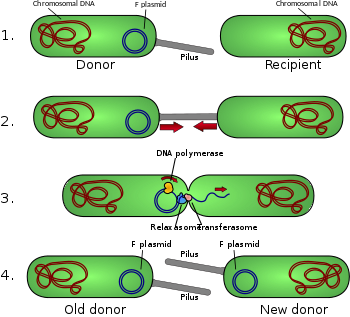Zoology Notes – For W.B.C.S. Examination – Conjugation In Ciliates.
প্রাণিবিদ্যা নোট – WBCS পরীক্ষার জন্য – সিলিয়েটসের মধ্যে সংহতি।
Most ciliates are free-living forms. Relatively few are parasitic, and only one species, Balantidium coli, is known to cause human disease. Some other ciliates cause diseases in fish and may present a problem for aquaculturists; others are parasites or commensals on various invertebrates. Still others live in great numbers in the digestive tracts of many hoofed mammals, where they serve to stabilize the large populations of symbiotic bacteria that break down cellulose in the animals’ food.Continue Reading Zoology Notes – For W.B.C.S. Examination – Conjugation In Ciliates.
Free-living ciliates may feed on bacteria, algae, or even other ciliates; Didinium, shown above, is a rapacious hunter and consumer of other ciliates. Some ciliates harbor symbiotic bacteria or algae. Free-living ciliates may be found almost anywhere there is liquid water, but different forms predominate in different habitats. Ciliates in soils tend to be small forms that can form resistant cysts in order to survive long periods of drying. Tintinnids abound in the marine plankton, where they and other ciliates may consume up to 90% of the production of planktonic bacteria and algae. Large ciliates are common in freshwater environments, in particular those that have been organically enriched (such as by sewage). By listing and counting the ciliate species in a sample of water, it is possible to estimate quickly how much organic material — which could include pollution — is present.Ciliates reproduce asexually by division: the micronucleus undergoes mitosis, while in most ciliates the macronucleus simply pinches apart into two. This process is shown in the drawing above.
However, ciliates also reproduce sexually, through a process known as conjugation. Conjugation is often induced by lack of food. Two ciliates of opposite mating types come close together and form a cytoplasmic bridge between the two cells; the micromuclei divide by meiosis, the macronuclei disintegrate, and the conjugating cells exchange haploid micronuclei over the cytoplasmic connection. They then separate, reform new macronuclei from their micronuclei, and divide. This may not sound very sexy, but remember that the essence of sexual reproduction is forming a new organism from the combined genetic material of parents. After conjugation, each ciliate partner has acquired new genetic material, and divides to give rise to progeny with a new combination of genes. This is essential to the survival of ciliate lineages; most ciliates cannot reproduce indefinitely by asexual fission, and eventually die out if prohibited from conjugating.
Ciliates have:
- at least one small, diploid (2n) micronucleus. It contains the entire genome but is not active in gene transcription.
- a large, polyploid macronucleus that contains the active genes that run the cell.
Sexual reproduction in ciliates is by conjugation. The figure shows the process in Paramecium caudatum.
- Two paramecia come together side by side, and a cytoplasmic bridge forms between them.
- The micronucleus of each undergoes meiosis.
- Three of the resulting haploid (n) nuclei disintegrate.
- The fourth duplicates by mitosis.
- One daughter haploid nucleus in each cell moves across the cytoplasmic bridge and fuses with the remaining daughter nucleus in the other cell forming a diploid nucleus in each cell.
- The cells separate.
- The old macronucleus disintegrates and a new one is formed from the micronucleus.
- This process (as seen in the related ciliate, Tetrahymena thermophila):
- The micronucleus produces a copy by mitosis.
- This copy undergoes repeated rounds of endoreplication producing polytene chromosomes.
- Non-genic DNA (like newly-acquired transposons) is removed (by RNA interference).
- The chromosomes are broken up into pieces (“minichromosomes”) that often are so small that they contain only a single gene.
- The enzyme telomerase protects these minichromosomes by putting telomeres on their ends.
- The minichromosomes then replicate until as many as 20 million (2 x 107) may be present in the macronucleus.
Two parents come together and two parents separate. What kind of reproduction is that? you may well ask.
But the process they have been through is the very essence of sexual reproduction — genetic recombination. The “offspring” are not the same as the parents. They are new individuals and their macronucleus will soon reflect that fact.
Curiously, though, they have also become identical twins. Each parent formed two identical haploid nuclei — gave one away and kept the other. Thus when the cells separate, their new diploid micronuclei are identical. As the twins begin asexual reproduction (by fission), they are the founders of a clone.
Ciliated protozoans have been the source of several important discoveries in biology, for example:
- The first ribozymes were found in Tetrahymena thermophila.
- Telomerase was also discovered in Tetrahymena thermophila.
Please subscribe here to get all future updates on this post/page/category/website


 +919674493673
+919674493673  mailus@wbcsmadeeasy.in
mailus@wbcsmadeeasy.in







































































































